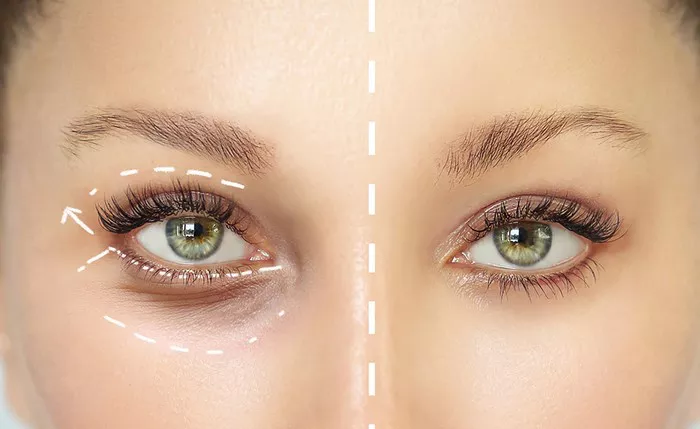Chicken skin, also known as keratosis pilaris, is a common skin condition that causes small, rough bumps to appear on the skin. While this condition can occur anywhere on the body, it is particularly common under the eyes, where the skin is thin and delicate. If you are dealing with chicken skin under your eyes, there are several steps you can take to treat the condition and improve the appearance of your skin. In this article, we will explore some of the most effective treatments for chicken skin under eyes.
What Causes Chicken Skin Under Eyes?
Before we dive into how to treat chicken skin under eyes, let’s first explore what causes this condition. Chicken skin is caused by an excess of keratin, a protein that is found in the skin, hair, and nails. When there is too much keratin in the skin, it can clog hair follicles and create small, raised bumps.
While the exact cause of chicken skin is not known, it is believed to be related to genetics and dry skin. People with a family history of the condition are more likely to develop it themselves, and dry skin can exacerbate the symptoms.
Chicken skin is typically harmless, but it can be unsightly and cause self-consciousness, particularly when it appears under the eyes.
How to Treat Chicken Skin Under Eyes
If you are dealing with chicken skin under your eyes, there are several steps you can take to treat the condition and improve the appearance of your skin. Some of the most effective treatments for chicken skin under eyes include:
1. Moisturize Regularly
One of the most important steps you can take to treat chicken skin under eyes is to moisturize regularly. Dry skin can exacerbate the symptoms of chicken skin, so keeping the skin well-hydrated can help to reduce the appearance of bumps.
Choose a gentle, fragrance-free moisturizer and apply it to the affected area twice a day, or as needed. Look for moisturizers that contain ingredients like ceramides, hyaluronic acid, or glycerin, which can help to lock in moisture and improve the skin’s barrier function.
2. Exfoliate Gently
Exfoliating the skin can help to remove dead skin cells and unclog hair follicles, which can improve the appearance of chicken skin under eyes. However, it’s important to exfoliate gently, as harsh scrubs or exfoliants can irritate the delicate skin around the eyes.
Choose a gentle exfoliant, such as a chemical exfoliant that contains alpha-hydroxy acids (AHAs) or beta-hydroxy acids (BHAs). These ingredients can help to dissolve dead skin cells and unclog hair follicles without causing irritation.
3. Use Retinoids
Retinoids, which are derivatives of vitamin A, can help to improve the appearance of chicken skin under eyes. These ingredients work by increasing cell turnover and promoting the growth of new skin cells, which can help to smooth out rough, bumpy skin.
Choose a gentle retinoid product, such as a retinol serum or cream, and apply it to the affected area once a day, or as directed by your dermatologist. It’s important to start with a low concentration of retinoids and work your way up gradually, as these ingredients can be irritating to the skin.
4. Consider Laser Treatments
For more severe cases of chicken skin under eyes, laser treatments may be an effective option. Laser treatments work by targeting the hair follicles and destroying them, which can help to reduce the appearance of bumps.
There are several types of lasers that can be used to treat chicken skin, including fractional lasers and pulsed dye lasers. Your dermatologist can help you determine which type of laser treatment is best for your individual needs.
5. Consult with a Dermatologist
If you are dealing with chicken skin under your eyes, it’s important to consult with a dermatologist. A dermatologist can help to diagnose the condition and recommend the most effective treatment options.
In addition to the treatments listed above, your dermatologist may also recommend other treatments, such as topical steroids or prescription-strength retinoids.
Preventing Chicken Skin Under Eyes
While there is no surefire way to prevent chicken skin under eyes, there are several steps you can take to reduce your risk of developing the condition. Some tips for preventing chicken skin under eyes include:
Moisturize regularly to keep the skin well-hydrated
Avoid harsh scrubs or exfoliants that can irritate the skin
Use gentle cleansers that do not strip the skin of its natural oils
Wear sunglasses to protect the delicate skin around the eyes from sun damage
Avoid rubbing or scratching the skin around the eyes
Conclusion
Chicken skin under eyes can be a frustrating and unsightly condition, but there are several steps you can take to treat the condition and improve the appearance of your skin. By moisturizing regularly, exfoliating gently, using retinoids, considering laser treatments, and consulting with a dermatologist, you can reduce the appearance of bumps and achieve smoother, more radiant skin. Additionally, by taking steps to prevent chicken skin under eyes, you can reduce your risk of developing this condition in the future.


